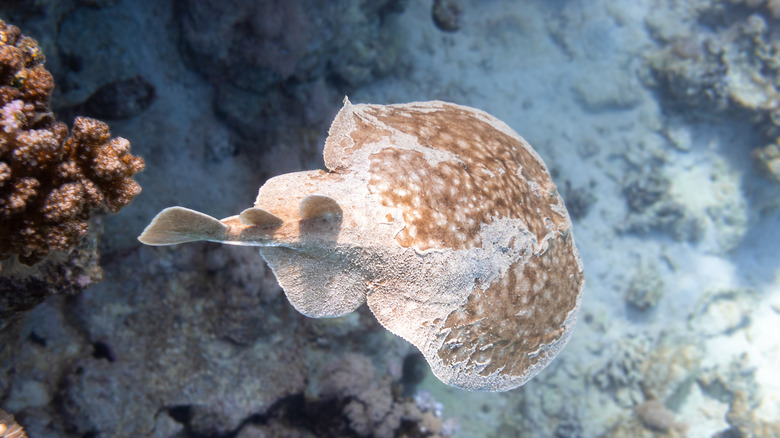The Terrifying Time Electric Fish Were Used To Cure Migraines
It would be fair to say that the history of medicine is a fraught one. While doctors may have always been in the business of curing the sick, many of the methods they used to alleviate ailments back in the times before modern medicine were dangerous, painful, or just downright terrifying. Some of us may already be familiar with some of the more notoriously ill-conceived medical solutions, such as using leeches to draw blood from their patients. But leeches were not the only creepy, crawly animal ancient doctors used to help heal the sick. As recently as the mid-18th century, doctors used electric fish as a remedy for migraines.
Migraines are more than simply headaches. They are a complicated neurological condition, characterized by throbbing pain, dizziness, sensitivity to light and sound, and nausea, and even today they are not fully understood, according to the Cleveland Clinic. But there is one thing that is certain: for many migraine sufferers, they can cause debilitating pain and discomfort, sometimes for as many as fifteen days out of the month. So it makes sense that they would be willing to try anything that promised some relief. And for people who experienced migraines during the time of the Roman Empire, that thing just might have been electric fish.
Ancient Romans and Greeks used electric fish to treat maladies
According to Mental Floss, the Roman court physician for the emperor Claudius began studying the torpedo fish, otherwise called the electric ray, which was native to the Mediterranean Sea. He noticed that the terrifying fish sent shock waves through anyone who touched it. The adult torpedo fish's shock can reach up to 170-220 volts, powerful enough to kill small fish and stun or possibly even disable humans, according to the Florida Museum. But rather than advising everyone to stay far away from these jolts of electricity, Claudius' court physician began theorizing that those shocks might be just the thing the emperor needed to help cure his migraines.
Although the logic behind the healing properties of electric shock was not fully understood, both the ancient Romans and the ancient Greeks used the torpedo fish's powerful electric shock to help treat migraines, as well as other ailments like gout. The practice continued in Europe throughout the 17th and 18th centuries, with even Dutch doctors in the mid-1700s valuing the discovery of the electric eel, which is native to South America, because they delivered even more powerful electronic shocks, which were thought to even more effectively relieve head pain and migraines.
Electric shocks are still used in medical treatment today
However, while shocking sick people might sound barbaric to many of us today, electric shocks are still used even in some modern treatments. Mental health professionals still employ Electroconvulsive therapy, a procedure in which a series of electrodes sends electrical pulses through the patient's brain to induce a seizure while they are under anesthesia. This electrical stimulation is believed to help treat symptoms of severe depression, bipolar disorder, and schizophrenia, and is still used today in some serious cases, according to the American Psychiatric Association.
Recent studies have also suggested that the ancient Romans and Greeks might not have been so far off in their research. According to Harvard, a 2013 study showed that migraine sufferers who used a device to deliver electrical stimulation to their trigeminal nerve in their forehead for twenty minutes a day reported fewer migraine headaches and a reduced need for pain medication. A similar 2019 study supported the findings that using light electronic stimulation may help provide relief or even prevent migraines. So while shocking people with fish might seem terrifying and not all that scientific, it turns out that the emperor's physician might have been onto something after all.


